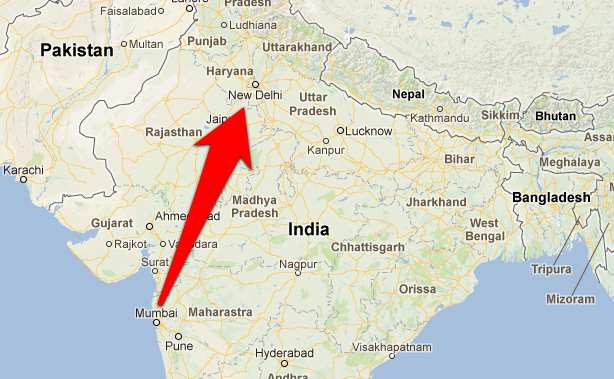Since coming back from India haven’t actually had time to sit and collect my thoughts about my trip. In fact most of my reflection so far has been from me telling friends and co-workers about the trip so sometimes the thoughts coming from me are the first time I’ve heard these thoughts myself. I definitely wasn’t expecting the experience I got, but then most of my pre-conceived notions about India and the local culture have been from movies and television, and those are rarely ever real.
Dress :
Almost all the women I’ve seen in India are draped in bright, beautifully ornate saris, scarves and kurtis. This is true despite their wealth. Even at poverty levels or rural areas the women are brightly dressed.
I suppose if they have the money then they get the joy of adorning themselves with bangles, anklets and earrings. Some younger Indian women dress in Western wear (read: skinny jeans and a modest top).
One of the things I noted when doing my very brief pre-India trip was that India has a mix of different religions and thus so many different lifestyles. I have also seen many Muslim women in their traditional black burkas, but not as many as I thought considering how religiously diverse India is, and especially since the area where we’ve been doing sightseeing is closer to predominately Muslim counties. I’ve also seen a few Sikhs as well. It is especially fun when Sikh men ride around on on scooters because their facial hair blows gracefully in the wind.

The men are dressed much less, still they’re not walking around wearing t-shirts and shorts. Most men wear button down shirts and slacks, though some younger men will wear jeans. It also seems common for babies in impoverished areas to not wear pants. They do wear shirts though, after all they’re not barbarians.
Transportation
Standard modes of motorized transport are motorcycle or scooter, auto rickshaw and car. It’s not unusual to see an auto rickshaw (designed to seat three in the back with another space in the front, next to driver) filled to the brim with people, especially in the mornings and afternoon when kids are going to and from school.
The driving situation in India is very complicated but also as basic as walking. You go where you can go, if something is in your way you stop or go around it. Of course there are two directions of traffic, and like in England, one drives on the left side of the road, however sometimes exceptions can be made. If there is no center median at an intersection, you can, of course, take up some of the lanes of opposing traffic to wait for the light. No problem! If there’s an obstruction on your side of the street, like say a pothole or traffic jam, just drive on the other side of the road to get around it. Use this method sparingly.
This also means you don’t have to worry about lanes, they’re more like a suggestion anyway. If there is space for your motorcycle, auto rickshaw, or car to fit between two cars, go for it! Wedge into that space and drive. Don’t forget to honk to let other drivers know your whereabouts. Also honk when you are passing other vehicles, when you are in a blind spot, when you are in a visible spot, when you’re coming to an intersection where other cars or pedestrians could cross, or if the light has just turned green and you want to make sure everyone around you knows it.
There are several types of horns equipped on vehicles in India. You have your standard horn (honk honk), your Xena Warrior Princess, your silly song horn, and your dying cow horn.
There are advantages and disadvantages of riding a motorcycle as opposed to a car but the motorcycles seem more handy. You give up the comfort (air conditioning) and safety but you get much more versatility! You can still take the fam to visit the countryside, I’ve seen two adults with two small children on one bike before.
In respect to traffic, Delhi is probably the worst city I’ve visited in India. “it is very traffic” as drivers here would say.
Work
From what I’ve learned from two different sources, the average pay for a day of work is 150-200 rupees, which is equivalent to $2.70 – $3.70. This boggles my mind. I know the cost of living is different but I still wonder what gets paid in terms of living expenses and how often.
Animals
Most dogs I’ve seen while here appear to be “wild”, that is, they don’t belong to anyone and they are free to walk around, breed and eat whatever trash they can find. There are plenty of monkeys in certain areas. There weren’t many in Mumbai the city but there were definitely monkeys on Elephanta Island, which is off the coast of Mumbai.
And there were wild monkeys running around the rooftops of Agra. We also saw camels – these were not wild and a few elephants. Also saw a lot of peacocks, and a herd of horned mammals over at Sikandra:
Oh and I did this in India:
The full Flickr photo set of pictures from India can be seen here.













